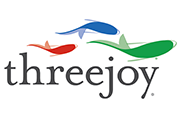7 languages for educational transformation
 Introduction
Introduction
Coming home on a long flight I was reading Kegan and Lahey’s book How the Way We Talk Can Change the Way We Work: Seven Languages for Transformation. In working as a coach, the power of language, story, and reframing is hard to overestimate. As clients work to change, the role of talking differently about themselves and others is often a key element to making the changes they say they want to achieve.
What We Want & What We’ll Do to Keep from Getting It
What clients “say they want to achieve” is one thing. What they will do to keep from getting it is critical here and is is driven home in the book in the introduction. There, the authors quote Harvard colleague William Perry as follows:
“Whenever someone comes to me for help, I listen very hard and ask myself, `What does this person really want-and what will they do to keep from getting it? ‘ ”
In change, the major obstacles to change are often internal, not external, and the client’s own actions against his or her own stated interests are often obstacle one.
7 Languages for Transformation
The book discusses 7 shifts in language as follows:
- From the Language of Complaint to the Language of Commitment
- From the Language of Blame to the Language of Personal Responsibility
- From the Language of New Year’s Resolutions to the Language of Competing Commitments: Diagnosing the Immunity to Change
- From the Language of Big Assumptions That Hold Us to the Language of Assumptions We Hold: Disturbing the Immunity to Change
- From the Language of Prizes and Praising to the Language of Ongoing Regard
- From the Language of Rules and Policies to the Language of Public Agreement
- From the Language of Constructive Criticism to the Language of Deconstructive Criticism
The choice of complaints to commitments as the first shift is an interesting one. It can be an important first step away from playing “ain’t it awful” with oneself, one’s colleagues and co-workers and toward making clear requests, commitments, and agreements toward actions that matter.
Educational transformation is a difficult undertaking. Reading this book and applying it’s lessons can be an important step toward utilizing language in productive ways to bring about transformation.


